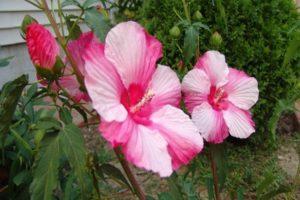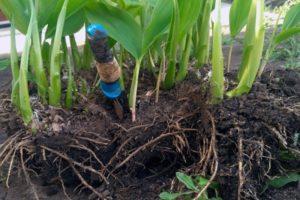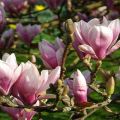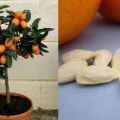Description and characteristics of the Susan magnolia variety, planting and care
Magnolia is an amazing plant that even survived the era of the dinosaurs. But even now, culture continues to delight the eye with its magnificent flowers. Susan's magnolia is popular all over the world for its incredibly beautiful flowering.
Description and characteristics of Susan's magnolia
Magnolia Susan is a tree whose height reaches from 2.5 to 6.5 m. The shape of the tree is pyramidal, as it grows, it acquires a rounded shape. The foliage has a rich green hue, the leaves are large, thick and glossy.
The inflorescences grow upward, the blossoming flowers are large, goblet-shaped. The diameter of the flower reaches about 15 cm. In the inflorescence there are six petals of a light pink shade. Blooming inflorescences are very fragrant. The flowering period begins in April and ends in June. The life span of a tree is about 50 years. The variety was obtained by crossing the lily and star magnolia.
Advantages and disadvantages of the variety
The advantages of the Suzanne Magnolia variety include:
- large and beautiful flowers;
- tree lifespan;
- aroma of flowers;
- unpretentiousness in cultivation and care.
The disadvantages include the fact that magnolia can only be grown in the south. The tree belongs to heat-loving crops and does not survive the frosty winters that occur in most regions.
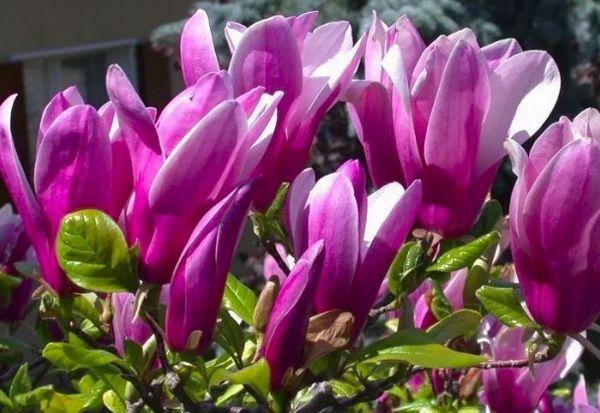
Growing a plant
Growing magnolias is a pleasure. If you provide the plant with favorable growth conditions, then you can enjoy beautiful and fragrant flowers for a long time.
What should be the soil?
Magnolia does not like lime soil, so you will have to add peat to the soil if the site is with such a substrate. Also, the tree is not recommended to be planted on a sandy soil type. Sandy loam fertile soil or black soil is suitable for planting.
What should you pay attention to when landing?
It is recommended to plant the plant in areas protected from strong winds. It is best to plant the seedling in a sunny area, which will be regularly shaded during the day.It is undesirable to overmoisten the soil before planting. It is not recommended to plant a seedling in the spring. You can risk it, but sudden spring frosts can destroy the plant.
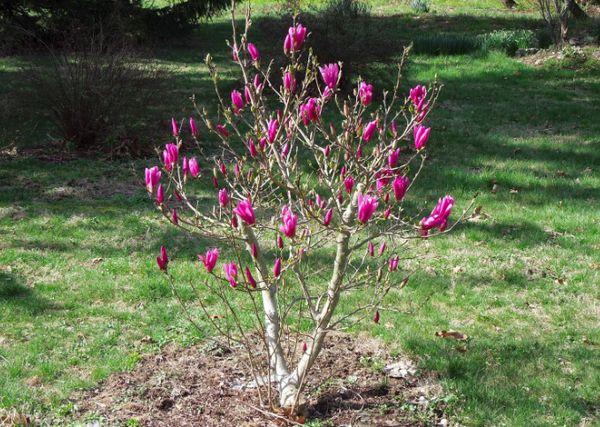
The most favorable period for planting is October. At this time, the magnolia begins a hibernation period, and the seedling tolerates planting more easily. Winter hardiness of the variety is low, therefore, after planting, before the onset of cold weather, the seedling should be covered.
Landing technology
Planting magnolia varieties Susana:
- dig up the soil and mix it with wood ash;
- dig a hole to a depth of 70 cm;
- put the seedling in the hole and bury it;
- compact the soil near the trunk.
At the end of planting, water the seedling abundantly with warm water. During planting, it is undesirable to deepen the root collar. It should be at least 2 cm higher from the ground level. After watering, the seedling is mulched with peat.
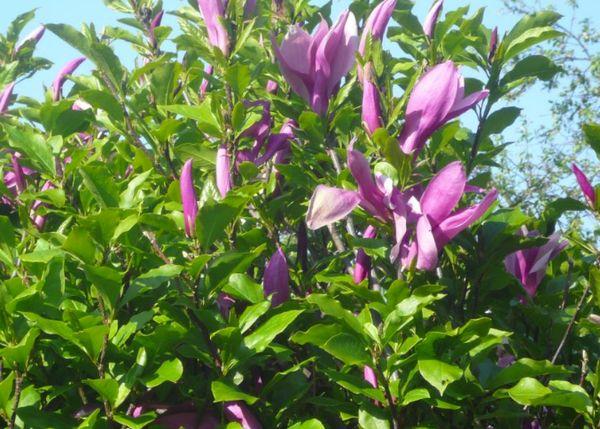
Further care of the culture
Plant care is not difficult. The main thing is not to forget about watering the tree and the introduction of mineral fertilizers and organic matter. It is also important to consider covering the tree before winter comes.
Proper watering
A feature of watering magnolia is that within 3 years after planting a seedling, it must be watered so that the soil is moist all the time and does not dry out. But at the same time, waterlogging of the soil should also not be allowed.
When the tree is older, you can water it several times a month. The larger the tree, the more water it needs. For irrigation, they take water heated in the sun.
Before watering, you can loosen the soil, but this must be done carefully. The root system of a tree grows in such a way that all the roots are closer to the soil surface. In order not to damage the roots, the soil is loosened with a pitchfork.
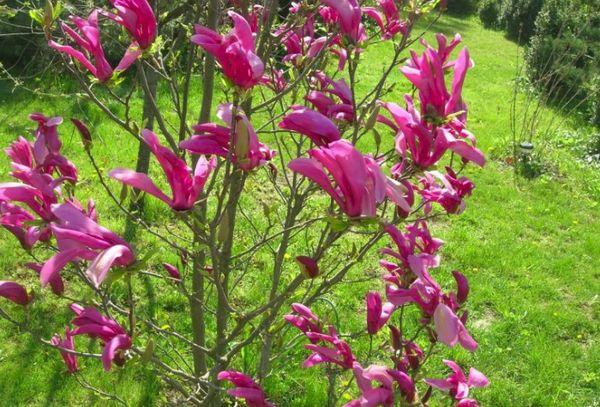
How to fertilize and feed
In the first two years after planting the seedling, fertilizers are not required for it (provided that enough fertilizing was applied to the soil during planting). In the third year of growth, the substrate on which the tree grows is depleted, and fertilization is inevitable.
Ready-made mineral complexes for flower shrubs are suitable. You can also prepare the top dressing yourself. For its preparation, urea and saltpeter are diluted in water (in a ratio of 20:15 g). The resulting solution is poured over the soil next to the plant.
Plant pruning
Typically, formative pruning of magnolia bushes is not required. In the fall, after the tree has faded, the peduncles and dry branches are cut off. Places of cuts are lubricated with garden varnish so that the plant does not get sick. For trimming, a sharpened sector is used so that there are no creases in the places of the cuts.
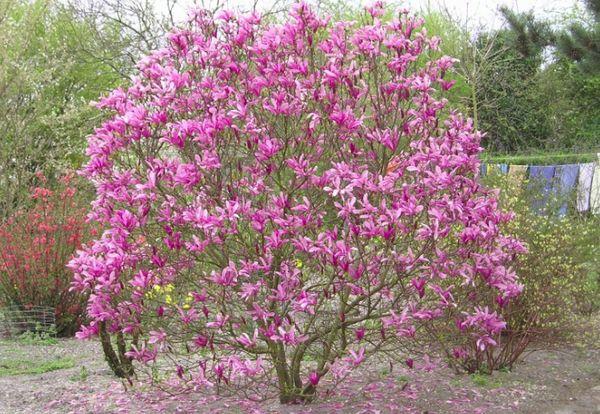
In the spring, sanitary pruning is not recommended in order not to damage the tree. During this period, active sap flow begins, and any pruning manipulations can only harm.
Wintering
Magnolia belongs to heat-loving plants, and frosty winters are destructive for the tree. Before the onset of cold weather, the lower part of the trunk is wrapped in a warm cloth. And the ground near the trunk is covered with spruce branches.
Diseases and pests
The most common insects on magnolia are aphids, spider mites, and worms. You can get rid of these insects on the plant by spraying with acaricides.
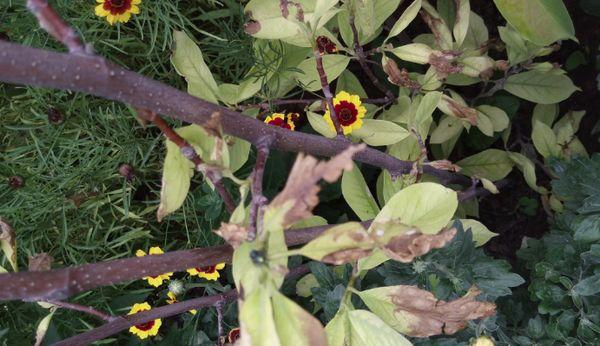
Another problem that you have to face is rodents. If traces of mice appear on the bark, they are treated with Fundazol solution. And when the soil freezes, they mulch it. This will prevent the mice from reaching the roots and trunk.
Sometimes yellow spots may appear on the foliage - chlorosis. This problem arises due to the high lime content in the soil. To solve this problem, you need to add peat, soil from a coniferous forest or water the soil with a special preparation that increases acidity.
Breeding methods
There are several ways to breed Susan magnolia:
- grafting;
- seeds;
- layering.
If the plant propagates by seed, then the material is planted immediately after collection. Magnolia planting material is very poorly stored. The seed coat is very hard, so before planting, the side walls are cut off with sandpaper or simply pierced with a needle.
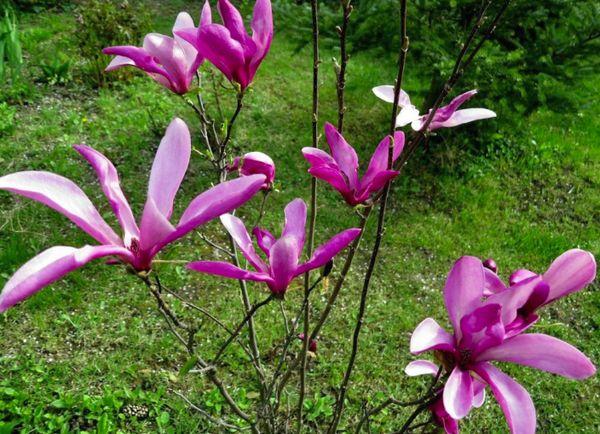
The surface of the planting material is covered with a thin oily layer, so before planting it is carefully washed off with warm water and soap. Then rinse in clean water.
The prepared seeds are planted in the ground to a depth of 3 cm. The boxes with magnolia are removed to the basement. In March, they are taken out and placed on the windowsill, on the sunny side. For a year at home, the seedlings will grow by about 50 cm. Only then are the seedlings transplanted into open ground.
When grown by cuttings, cuttings are cut at the end of June, when the tree fades. They are cut so that 3 full leaves remain on top. The lower part of the cuttings is placed in a growth-activating solution. After that, the twigs are planted in a mixture of peat and soil.
Cover drawers with cuttings and place in a warm place. The temperature at which roots appear on them ranges from +19 to + 21 degrees. Roots should appear after about 9 weeks. And in October, the cuttings are planted in the ground.
Another breeding method is layering. The lower branches are bent to the soil in spring and buried. The branch needs to be secured with something. By autumn, the layers will give roots. After a few years, they can be separated from the mother plant and transplanted.
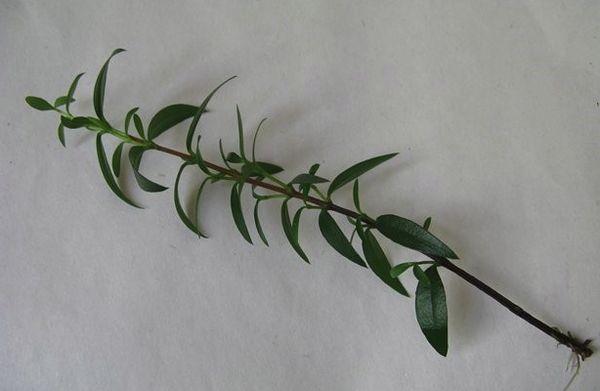
Possible growing problems
Problems with growing Suzanne's magnolia:
- Low soil acidity. The crop prefers to grow on land with a high acidity level.
- With an excess of nutrients in the soil, the foliage becomes covered with yellow spots and dries up. You can solve this problem by watering the plant abundantly once a week.
- It is not recommended to introduce large amounts of nitrogen into the soil. This will increase the risk of root freezing in winter.
- Do not allow the soil to dry out. This can lead to the appearance of a spider mite on the tree.
Growing magnolia is not as difficult as it might seem at first glance. The main thing is to follow all the care recommendations, and then the tree will delight with its fragrant flowers for many years, because the magnolia has been growing for almost half a century.
Application in landscape design
Susan's magnolia hybrid variety is very popular in landscape design, especially the variety is used to decorate embankments at seaside resorts. The tree looks great in an urban setting. When the magnolia enters the flowering period, it is impossible to look away from the tree.
